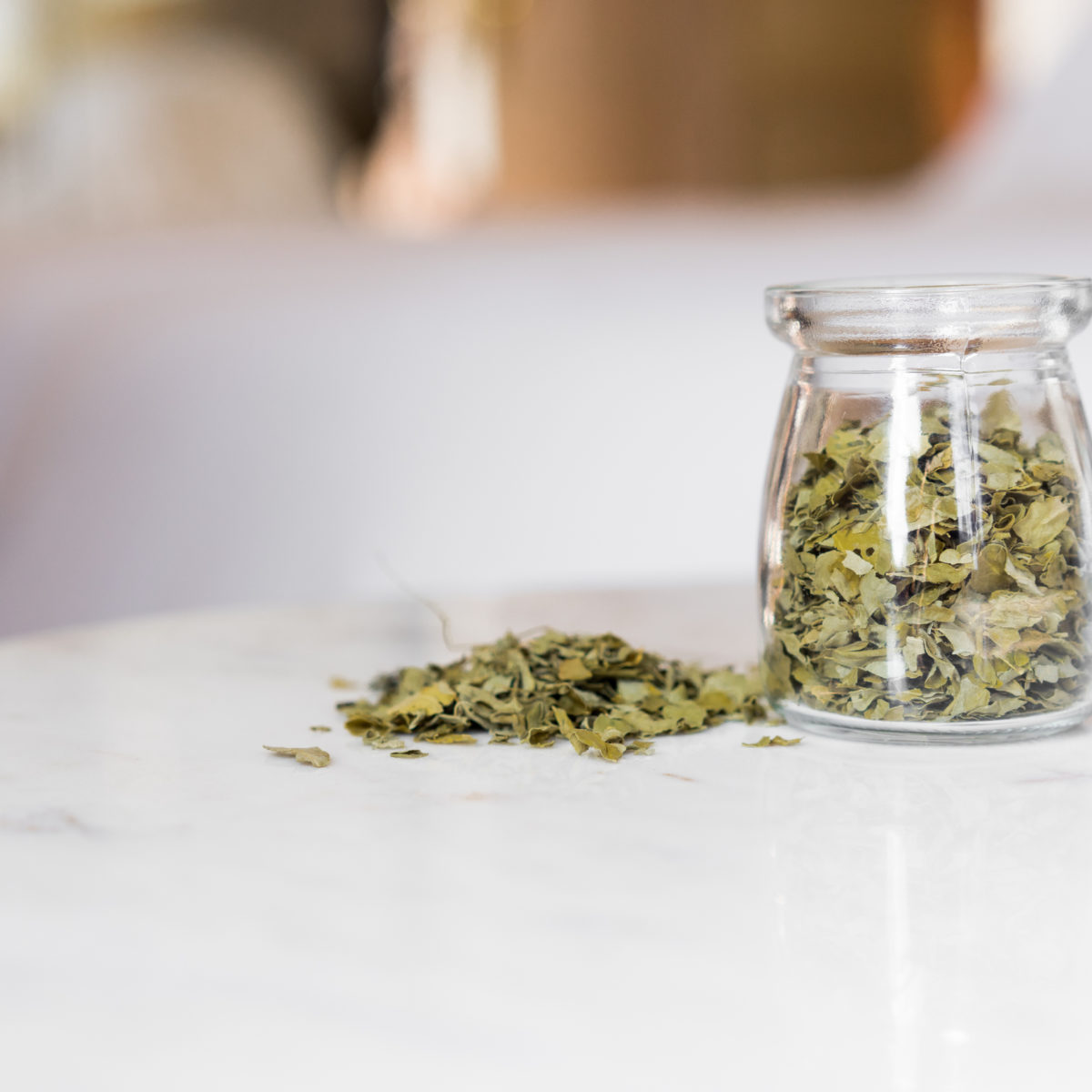
COMMON NAME (Chinese Name)
Moringa (Jing)
BOTANICAL NAME
Moringa oleifera
USES
Moringa supplements are versatile in their potential and proven uses. The most significant potential benefits to be gained from moringa supplementation are: alleviation of inflammation, control of infection, defiance of the physical and visceral signs of aging, and better, faster management of bleeding wounds and painful conditions. Similar findings suggest that moringa supplementation may present a practical alternative method of control for a variety of chronic medical conditions, including high blood pressure, diabetes, insulin resistance, and inflammatory illnesses. The anti-diabetic properties of moringa leaf extracts have received special attention from researchers, having been repeatedly empirically proven in humans. Otherwise, however, there is still insufficient human evidence of moringa leaf supplements’ other uses for physicians to actively recommend its use in the treatment of those conditions.
Moringa root supplements may be used to treat water against certain water-borne microbes, making it a potentially practical tool for travelers, campers, and hikers. Moringa extracts can be similarly helpful in treating and preventing the spread of foodborne illnesses.
It is fairly well-proven that women eating moringa leaves while breastfeeding will find their breast milk has been infiltrated by moringa-related compounds and nutrients. While this is normally quite a serious, negative effect of herbal supplementation, it is a desirable effect with moringa root; the added nutrients may augment the nutritional value of breast milk, helping fight malnutrition in infants. When postmenopausal women eat moringa leaves, they may experience uniquely protective benefits against menopausal complications.
Moringa is not a significant herb in Chinese medicine as it is from Ayurveda. We do not have conclusive information on energetics or categories of Chinese herbs for moringa.
PREPARATION & ADMINISTRATION
Every part of the moringa tree has proven useful for nutritional and/or medicinal use. This includes the leaves, seeds, pods, and flowers, especially. Regardless of which plant part appears in a supplement, the preparation is usually the same; dried plant parts are ideal for hot-water decoction (to be ingested as a tea, applied topically, or used to treat drinking water or food as a dilute extract). Alcohol extracts may also be available for purchase. The fresh leaves can also be eaten raw.
PRECAUTIONS
So far, no adverse effects have been reported in association with moringa supplementation. That being said, there are some significant gaps in the human research of supplements derived from different parts of the moringa tree, especially the seed extracts and oils. Though moringa root has a long history of reported use as a nutritional supplement for infants (mediated through the breastmilk of their mothers), there isn’t enough evidence to prove for certain that it is safe for infants.
Additionally, moringa supplementation may impact blood sugar levels and blood pressure. As a result, people who have diabetes or other metabolic conditions or who have problems with their blood pressure (or are taking blood-pressure-mediating medication) should avoid taking moringa supplements. Anyone interested in trying moringa or any other medicinal herb should consult with a physician, a certified herbalist, or other qualified healthcare professional first.
REFERENCES
Brilhante, Raimunda Sâmia Nogueira, et al. “Research Advances on the Multiple Uses of Moringa Oleifera : A Sustainable Alternative for Socially Neglected Population.” Asian Pacific Journal of Tropical Medicine, vol. 10, no. 7, 2017, pp. 621–630., doi:10.1016/j.apjtm.2017.07.002.
Bukar, A, and A Uba. “Antimicrobial Profile of Moringa Oleifera Lam. Extracts against Some Food – Borne Microorganisms.” Bayero Journal of Pure and Applied Sciences, vol. 3, no. 1, 2010, doi:10.4314/bajopas.v3i1.58706.
Gopalakrishnan, Lakshmipriya, et al. “Moringa Oleifera: A Review on Nutritive Importance and Its Medicinal Application.” Food Science and Human Wellness, vol. 5, no. 2, 2016, pp. 49–56., doi:10.1016/j.fshw.2016.04.001.
Leone, Alessandro, et al. “Cultivation, Genetic, Ethnopharmacology, Phytochemistry and Pharmacology of Moringa Oleifera Leaves: An Overview.” International Journal of Molecular Sciences, vol. 16, no. 12, 2015, pp. 12791–12835., doi:10.3390/ijms160612791.
Martínez-González, Claudia Lizbeth, et al. “Moringa Oleifera, a Species with Potential Analgesic and Anti-Inflammatory Activities.” Biomedicine & Pharmacotherapy, vol. 87, 2017, pp. 482–488., doi:10.1016/j.biopha.2016.12.107.
Seshadri, S., and V.s. Nambiar. “Kanjero (Digera Arvensis) and Drumstick Leaves (Moringa Oleifera): Nutrient Profile and Potential for Human Consumption.” World Review of Nutrition and Dietetics Plants in Human Health and Nutrition Policy, 2003, pp. 41–59., doi:10.1159/000069927.
Stohs, Sidney J., and Michael J. Hartman. “Review of the Safety and Efficacy OfMoringa Oleifera.” Phytotherapy Research, vol. 29, no. 6, 2015, pp. 796–804., doi:10.1002/ptr.5325.
Stohs, Sidney J., and Michael J. Hartman. “Review of the Safety and Efficacy OfMoringa Oleifera.” Phytotherapy Research, vol. 29, no. 6, 2015, pp. 796–804., doi:10.1002/ptr.5325.
Vergara-Jimenez, Marcela, et al. “Bioactive Components in Moringa Oleifera Leaves Protect against Chronic Disease.” Antioxidants, vol. 6, no. 4, 2017, p. 91., doi:10.3390/antiox6040091.

Comments (0)